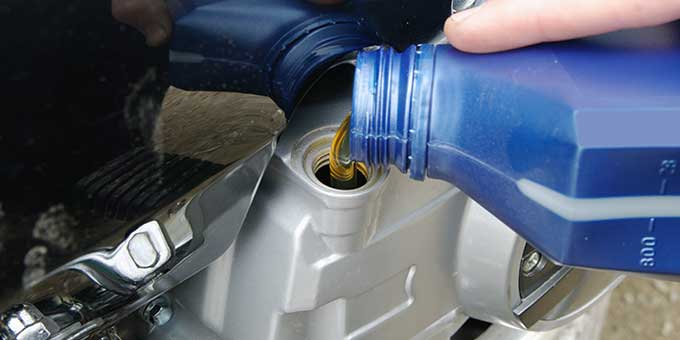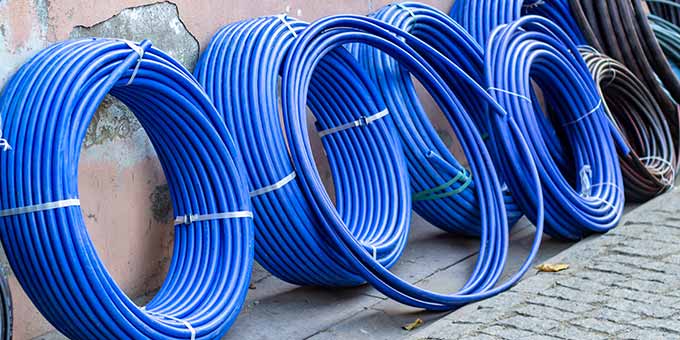Air compressors are essential tools for effectively and efficiently cleaning your PC. With the increasing need to maintain the performance and longevity of computers, proper cleaning is a must. This comprehensive guide will provide you with the top 10 best air compressors for cleaning PCs, along with essential information and frequently asked questions to help you make an informed decision.
Why use an air compressor for cleaning your PC?
Using an air compressor for cleaning your PC offers numerous advantages that make it an essential tool for maintaining your computer’s performance. Firstly, air compressors provide a high level of efficiency by quickly removing dust and debris, which can accumulate over time and negatively impact your PC’s performance. By eliminating this buildup, you can prevent overheating and prolong the life of your computer components.
Secondly, air compressors are highly effective in dislodging and removing stubborn dirt and dust particles, which are often hard to remove using traditional cleaning methods. The strong airflow generated by an air compressor can effectively clean even the most delicate components, such as heatsinks, fans, and circuit boards, without causing any damage.
Lastly, an air compressor’s ability to reach hard-to-reach places within your computer is unmatched. By using an air compressor, you can easily clean areas that are typically difficult to access, such as small crevices and the spaces between components. This ensures that your entire PC is thoroughly cleaned, leaving no hidden pockets of dust that could potentially cause problems in the future. Overall, using an air compressor for cleaning your PC is a reliable, efficient, and effective method to maintain your computer’s performance and longevity.
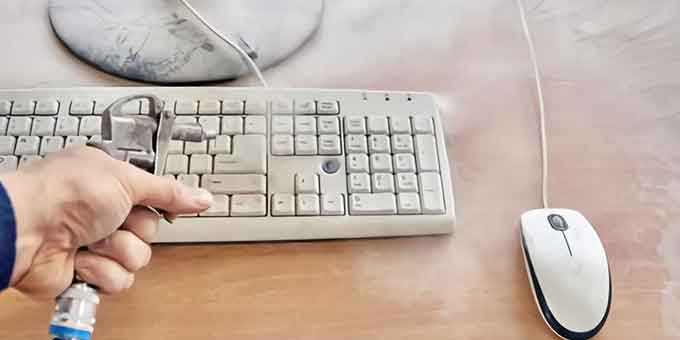
What to look for in an air compressor for PC cleaning?
When choosing an air compressor for PC cleaning, it’s crucial to consider several factors to ensure you select the right tool for the job. Here are the key aspects to keep in mind:
- Air Pressure: The air pressure, measured in pounds per square inch (PSI), is an essential factor to consider when selecting an air compressor for cleaning your PC. Higher PSI ratings mean more powerful airflow, which can effectively remove stubborn dust and debris. However, it’s crucial not to use excessively high pressure, as it may damage delicate components. A PSI rating of around 40-90 is suitable for PC cleaning.
- Portability: A portable air compressor is a great asset for cleaning your PC, as it allows for easy manoeuvrability and access to tight spaces. Look for air compressors with a lightweight design, compact size, and a comfortable handle for easy transportation.
- Noise Level: Air compressors can be noisy, which may be an issue for some users. To avoid disturbing your household or workspace, consider an air compressor with a low noise level, typically around 60-70 decibels (dB).
- Tank Size: The tank size of an air compressor determines the amount of compressed air it can hold. For PC cleaning purposes, a smaller tank size (1-6 gallons) is usually sufficient, as it’s more portable and takes less time to fill up. However, if you plan to use the air compressor for other tasks, a larger tank may be more suitable.
- Price: Lastly, consider your budget when selecting an air compressor for PC cleaning. Prices can vary significantly, so it’s essential to find a balance between quality and affordability. While higher-priced air compressors often come with more features and better performance, many budget-friendly options still offer excellent results for cleaning your PC.
By considering these factors, you’ll be well-equipped to choose the best air compressor for your PC cleaning needs, ensuring your computer remains clean and in optimal condition.
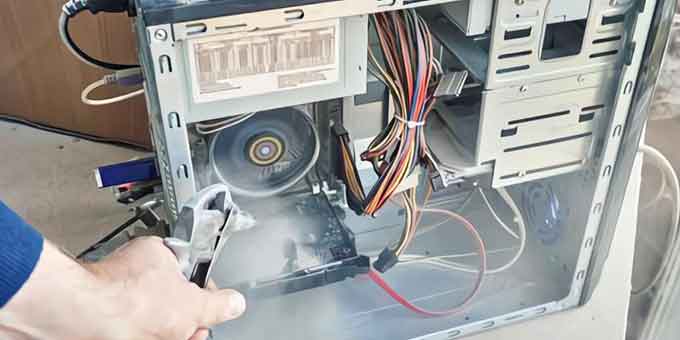
Top 10 Best Air Compressors for Cleaning PCs
In this section, we will provide an in-depth review of the top 10 air compressors for cleaning PCs, including their features, pros, and cons.
| Rank | Model | Tank Size | Noise Level | CFM at 90 PSI | Max Pressure | Pros | Cons |
|---|---|---|---|---|---|---|---|
| 1 | California Air Tools CAT-1P1060S | 1.0 gal | 56 dB | 1.2 | 120 PSI | Quiet, lightweight, oil-free pump | Not suitable for heavy-duty tasks |
| 2 | DEWALT DWFP55126 | 6.0 gal | 75.5 dB | 2.6 | 165 PSI | High max pressure, efficient regulator, compact design | Slightly louder than other models |
| 3 | Makita MAC2400 Big Bore | 4.2 gal | 79 dB | 4.2 | 130 PSI | Powerful motor, durable, low noise level | Heavier, more expensive |
| 4 | Bostitch BTFP02012 | 6.0 gal | 78.5 dB | 2.6 | 150 PSI | Lightweight, high flow regulator, oil-free pump | Some users may find it too noisy |
| 5 | Porter-Cable C2002 | 6.0 gal | 82 dB | 2.6 | 150 PSI | Quick recovery, easy transport, budget-friendly | Louder, may not suit heavy-duty tasks |
| 6 | Senco PC1010 | 1.0 gal | 68 dB | 0.7 | 125 PSI | Ultra-quiet, lightweight, oil-free pump | Not suitable for heavy-duty tasks |
| 7 | Campbell Hausfeld DC080500 | 8.0 gal | 68 dB | 2.4 | 125 PSI | Quiet, large tank capacity, oil-free pump | Heavier than other models |
| 8 | WEN 2289 | 10.0 gal | 72 dB | 4.0 | 150 PSI | Large tank capacity, easy transport, oil-free pump | Bulky, not as quiet as other models |
| 9 | Hitachi EC28M | 1.0 gal | 59 dB | 0.8 | 125 PSI | Ultra-quiet, compact, oil-free pump | Not suitable for heavy-duty tasks |
| 10 | Metabo HPT EC710S | 6.0 gal | 73 dB | 2.8 | 150 PSI | Lightweight, fast recovery, oil-free pump | Slightly louder than some other models |
California Air Tools CAT-1P1060S:
Features: This air compressor has a 1.0-gallon steel tank and operates at 56 dB, making it ultra-quiet. It produces 1.2 CFM at 90 PSI, with a maximum pressure of 120 PSI.
Pros: Extremely quiet operation, lightweight design, and oil-free pump for low maintenance.
Cons: Not suitable for heavy-duty tasks.
Porter-Cable C2002:
Features: This 6-gallon air compressor operates at 82 dB and provides 2.6 CFM at 90 PSI, with a maximum pressure of 150 PSI.
Pros: Quick recovery time, built-in handle for easy transportation, and budget-friendly.
Cons: Louder than other models and may not be suitable for heavy-duty tasks.
WEN 2289:
Features: This 10-gallon air compressor offers 4.0 CFM at 90 PSI, with a maximum pressure of 150 PSI.
Pros: Large tank capacity, rubber-grip handle for easy transportation, and oil-free pump for low maintenance.
Cons: Bulky and not as quiet as other models.
In conclusion, each of these top 10 air compressors has its own unique features, pros, and cons. By considering the specific needs of your PC cleaning tasks, along with factors such as air pressure, portability, noise level, tank size, and price, you can select the most suitable air compressor to maintain your computer’s performance and longevity.

How to use an air compressor to clean your PC?
Using an air compressor to clean your PC can be an effective and efficient method to remove dust and debris. Here is a step-by-step guide on how to use an air compressor to clean your PC:
Safety Precautions
- Ensure the air compressor is turned off and unplugged before starting.
- Disconnect your PC from the power source and remove all peripheral devices.
- Use safety goggles and a dust mask to protect yourself from dust particles.
- Set the air compressor to a safe PSI level (40-90 PSI) to avoid damaging delicate components.
Disassembling Your PC
- Carefully open the PC case by removing the side panel screws or latches.
- Remove components that can be easily detached, such as graphics cards, RAM sticks, and hard drives, to facilitate more thorough cleaning. Be cautious and handle components by their edges to avoid static discharge.
Cleaning the Components
- Begin by using the air compressor to blow dust off the case interior, starting from the top and working your way down. Direct the airflow at an angle to remove dust from crevices and hard-to-reach areas.
- Clean the fans by holding the fan blades steady to prevent them from spinning too fast and causing damage. Blow air across the blades and the fan’s housing to remove dust.
- For heatsinks, direct the airflow through the fins to dislodge dust and debris.
- Clean the motherboard by directing the airflow at an angle to remove dust from the surface and the spaces around components.
- For removable components, such as graphics cards and RAM sticks, hold them securely and use the air compressor to blow dust off their surfaces and connectors.
Reassembling Your PC
- Once all components are thoroughly cleaned, carefully reinstall them in their respective slots, ensuring they are properly seated and secured.
- Close the PC case by reattaching the side panel and securing it with screws or latches.
- Reconnect all peripheral devices and power cables before turning on your PC to ensure it’s functioning correctly.
By following these steps, you can effectively use an air compressor to clean your PC and maintain its performance and longevity. Remember to exercise caution and safety throughout the process to protect both yourself and your computer components.
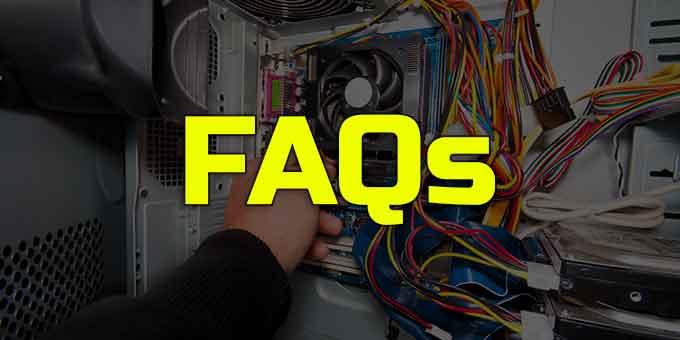
Frequently Asked Questions (FAQs)
Can I use an air compressor to clean other electronic devices?
Yes, an air compressor can be used to clean other electronic devices such as keyboards, gaming consoles, laptops, and audio equipment. However, it’s crucial to use caution and an appropriate PSI level to avoid damaging delicate components.
Is it safe to use an air compressor on my PC?
Yes, using an air compressor is safe for cleaning your PC as long as you follow proper safety precautions, use an appropriate PSI level, and take care not to damage delicate components with excessive air pressure.
What is the ideal air pressure for cleaning a PC?
The ideal air pressure for cleaning a PC typically ranges between 40-90 PSI. This pressure level is strong enough to effectively remove dust and debris without causing damage to delicate components.
How often should I clean my PC with an air compressor?
The frequency of cleaning your PC with an air compressor depends on factors such as the environment, usage, and how prone your PC is to dust accumulation. Generally, it’s recommended to clean your PC every 3-6 months, but more frequent cleaning may be necessary in dustier environments.
Can using an air compressor damage my PC components?
If used improperly or with excessive air pressure, an air compressor can damage delicate PC components. To avoid this, always use an appropriate PSI level, hold fan blades steady while cleaning, and be cautious when directing airflow around sensitive components.
Are there any alternatives to using an air compressor for cleaning my PC?
Alternatives to using an air compressor for cleaning your PC include using compressed air cans, handheld vacuum cleaners designed for electronics, or soft brushes. However, these methods may not be as effective in removing stubborn dust and debris compared to an air compressor.
Do I need any additional attachments or accessories for my air compressor?
While not necessary, using attachments such as a tapered nozzle or a soft brush attachment can help direct the airflow more precisely and clean hard-to-reach areas more effectively.
How do I maintain my air compressor?
To maintain your air compressor, regularly check for air leaks, clean the air filter, drain the moisture from the tank, and lubricate the moving parts if it’s not an oil-free model. Consult your air compressor’s user manual for specific maintenance instructions and schedules.
In conclusion, this guide aims to provide you with the information you need to select the best air compressor for cleaning your PC. By considering the factors discussed and reviewing the top 10 air compressors, you can make an informed decision and ensure your PC remains clean and functional for years to come.













